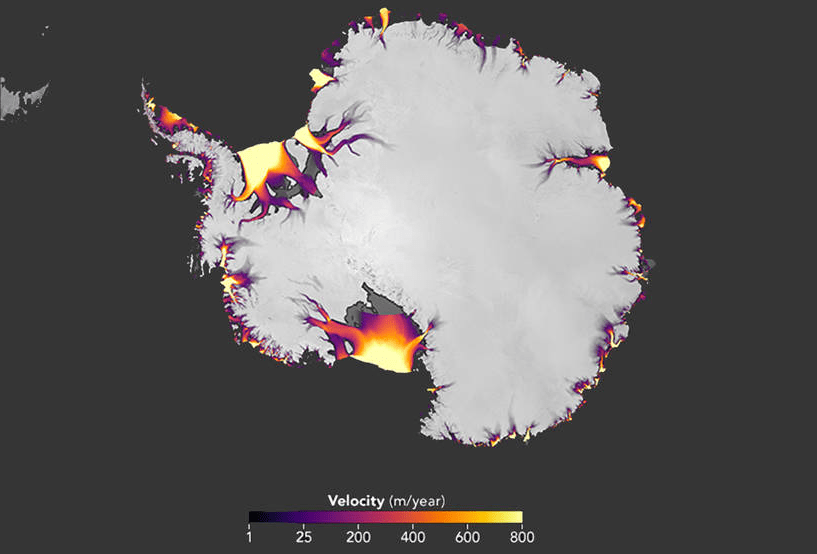The biggest glacier in Antarctica covers 74,000 square miles, about the size of the UK. This glacier contains enough frozen water to raise sea levels worldwide by 2 to 3 meters.

Alarming signs that point to its imminent (at least on geological timescales) collapse have been discovered by scientists. A recent discovery is large pockets of warm water, sitting under the glacier at an important point. Warm water beneath ice can accelerate the melting, and at a point like this is particularly dangerous (because it can accelerate the flow of ice from that point on). Another worrying impact is that water under glacier operates like lubricant, dramatically accelerating the speed with which the ice makes its way back into the sea.
The glacier alone accounts for around about 4 percent of worldwide sea level rise thus far. Unfortunately though if it were to collapse we could experience several metres of sea level rise in a short period of time. More alarmingly, the a glacier appears to be acting as a dam that is holding back a number of other significant glaciers within the Antarctic continent, so it collapse could lead to more sea level rise, and a collapse of the entire Western Antarctic ice shelf.
The Arctic consists of land surrounding a sea. When this sea freezes, by definition it will not significantly increase the sea level rise as the water was already part of the ocean. The Antarctic is different. The ice sits on a large piece of land, the problem is that covering 5.4 millions square miles (over 14 million square km) with an average ice thickness of 1.6 miles deep (2.6 miles deep).
This is a huge amount of water, locked up out of the sea. If released back into the sea, it could increase sea levels by over 60m worldwide, leaving many of the world’s largest cities and land under water. While for the time being this sort of collapse is not expected the removal of the glaciers that are holding this ice on land could start a chain reaction that would be impossible to stop.











